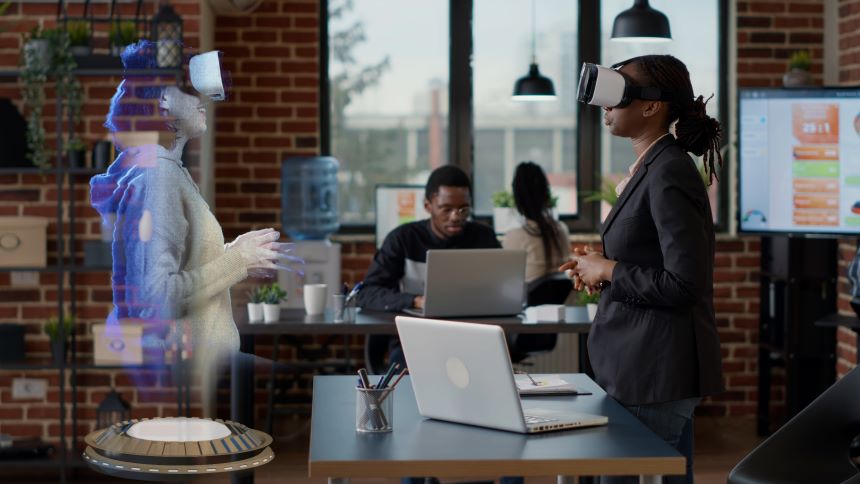
Learning in any organization is the base on which creativity, innovation, and strong execution is built. In this article, I explain how organizational L&D teams can use informal learning to reinforce, augment, and support formal training solutions.
The Modern Learning Challenge
Often, L&D teams are focused on delivering and creating great training. Most of the training budget is spent on formal training. However, employees are learning perpetually, regardless.
People have learned informally for millennia and to great effect. This involves communicating with SMEs – observing, listening, and enquiring. Employees usually don’t turn to formal training residing on LMS on a consistent basis. As a result, the gap between how employees learn and what L&D teams deliver continues to widen. As younger generations move into and throughout the workforce, traditional learning strategies will no longer be effective.
Therefore, L&D teams need to refocus their efforts to match the value informal and formal learning modalities offer to employees.
What is informal learning? Informal Learning is impromptu/spontaneous learning or learning ‘on the fly.’ It is an extension of the way all of us have been learning informally since childhood. It is self-directed and self-motivated and is usually done in situ. It supports performance when it’s needed.
Why Should You Invest in Both Formal Training and Informal Learning?
There are several specific reasons for organizations to invest in informal learning that supports and augments formal training programs.
The common refrain in the L&D world – that up to 70% of learning occurs informally in most organizations – is accurate and supported by research.1 That is based on research and indicates that the success of an organization depends on the quality of the informal learning taking.
Informal learning is all around us – across all employees. So, it makes sense for L&D teams to leverage it to create a healthy learning ecosystem and corporate culture.
Because it’s clear that informal learning happens, regardless of efforts to support, ignore, or control it by L&D teams, organizations can build goals around informal learning and seek to create a learning ecosystem that facilitates informal learning.
In fact, informal learning is the fundamental way in which employees develop competency in their job roles and develop additional skills and abilities. Informal learning is everywhere. Informal learning is more accurately described as learning that exists on a continuum: one side represents more formal learning and the other more informal.
What Is Formal Training and Informal Learning Good For?
Formal training is important because it drives learning initiatives within organizations.
Formal training:
- Adds structure to training programs and provides direction to employees.
- Is goal-oriented and targeted at specific objectives. It can be aligned to support specific enterprise goals and objectives.
- Is often facilitated by subject matter experts with specific knowledge related to the process, topic, or situation.
- Is easier to assess. Tracking programs are more robust for formal training programs.
Informal learning, comprising 70% of all learning within an organization, is vital for enterprise and individual success.
Informal learning:
- In the same way that the French composer Claude Debussy described, “music is the space between the notes,” the space between formal training is where true learning happens. That space can be empty and left up to chance or L&D teams can seek to fill it with thoughtful nudges, opportunities for practice and feedback, and a series of behavior-changing micro-experiences. It’s the small, everyday experiences that truly change behavior, not grand, infrequent formal training events.
- Is self-directed, therefore employees learn more effectively.
- Is where the vast majority of the learning
- Is a space where employees leverage creativity, collaboration, and innovation.
How Do You Create a Connected Learning by Supporting Formal Training with Informal Learning?
The concept of a learning culture based on a learning and performance ecosystem meshed approach to blended formal training with informal learning opportunities is vital for an effective integration of modalities. To do this, L&D teams need to redefine the role of formal training, using it to add structure to informal learning and give employees a sense of direction and help them achieve baseline proficiency.
A large proportion of formal training needs to switch to help employees understand:
- How to learn – Many employees, especially those who depend on others to tell them what to learn and when to do it, may have either forgotten or never learned the art of learning.
- How to cut through noise – Between daily stand-up meetings, emails from HR, IT problems, and completing their basic job responsibilities, employees must maximize what time they have for learning instead of being distracted by vacuous emails, social media, and other interruptions.
- How to eliminate distractions – By focusing on learning that will guide them in their career and job role.
- How to focus on actual results – Learned and adopted behaviors, experiments and iterations, and improved cross-silo relationships.
It also affirms that:
- A bias for action, clear headed iteration, learning, and honest evaluation and feedback is more valuable than heads-down checklists and safe inaction.
- The value of celebrating the learning process, appreciating failed experiments as learning opportunities.
As organizations foster a learning culture, employees will have the courage and ability to seek continuous improvement on the job. That will enable them to use informal learning for practice, collaboration, and learning on the job, moving toward mastery.
Informal learning is a way for L&D teams to attain the holy grail of learning – content personalized to the individual. L&D teams can give direction, recommendations, and access to content and a space for employees to curate and share their own content and experiences. This can then be used in the future by L&D teams for even more focused and efficient formal training and learning paths.
It’s also important for L&D teams to strike a balance, incorporating informal learning strategies to support formal training, by:
- Investing in informal learning platforms.
- Supporting self-directed learning, social learning, curation, and learning in the flow of work.
- Mapping informal learning efforts to formal training objectives.
- Create extended learning solutions that don’t focus on a moment in time, but instead included ongoing practice, evaluation, and follow-up opportunities.
How Do You Evaluate Informal Learning?
Informal learning has a 75% chance of changing behavior, encouraging employees to adopt new behaviors, versus the 5% – 20% efficacy rate of more formal training solutions.2 This is a different take on the 70/20/10 rule considered by many L&D professionals.
While sometimes difficult, the following are examples of readily available and objectively measurable indicators of the effectiveness of a company’s culture of informal learning:
- Survey employees and ask questions such as:
- How have you enhanced your knowledge and skills required for your job in the past year?
- What did you learn?
- What form of media did you apply?
- How many hours did you dedicate to these activities in the last one month?
- Assess the number of silo-crossing collaborations in the organization.
- Identify the quality and speed of product and service innovations.
- Evaluate the amount of information sharing and curated content within a social learning platform.
- Evaluate employee engagement – higher engagement implies more learning.
- Collect thoughtful feedback directed at formal training.
- Identify employee produced content and SME recognition.
Parting Thoughts
Creativity, innovation, and effective tactical execution starts with a healthy culture of learning. I hope this article provides the requisite insights on how you can leverage informal learning to augment, support, and bolster formal training and create holistic training programs to facilitate organizational success.
Meanwhile, if you have any specific queries, do contact me.
Learn how to plan, strategize, and deliver effective training programs for your remote workforce in 2021.
Download our eBook trilogy, ‘Elevating Remote Learning Programs’. In this series, we share our experience in 2020 of having helped organizations and L&D teams around the world successfully adopt remote workforce trainings.
References
- Livingstone, D. W., (2001). Adults’ Informal Learning: Definitions, Findings, Gaps and Future Research. WALL Working Paper No 21. Retrieved from https://tspace.library.utoronto.ca/bitstream/1807/2735/2/21adultsinformallearning.pdf
- Conner, M., (2002). At The Water Cooler of Learning. Retrieved from http://marciaconner.com/water-cooler-learning/



